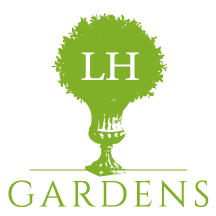Plant of the Week:
Zizia aurea, or Golden alexander
Here’s the plant that I was going to have as Plant of the Week. But Digitalis purpurea is not a native, and that didn’t feel right for a Doug Tallamy episode. This photo serves double duty— it shows some of my daffodil foliage that is not ready to say good-bye.
Zizea aurea is our first time repeat Plant of the Week. Way back in episode 50 I chose it for the first time, as it was a new plant for me, and a native that I wanted to try.
I have it growing in fairly deep shade, but it’s blooming nicely now in May. My plan is to divide it and move it to a sunnier spot to see how it fares.
Golden Alexander has umbeliscious flowers (I made that word up) and provides food for the swallowtail caterpillar.
Artist Karen Blair
You heard me mention my friend Karen Blair on the pod. Karen is a local Charlottesville artist who sponsors Into the Garden with Leslie
Have a look at what Karen can do— she worked with one of my listeners, Anne Brooks Rudzki, of Capital Roots Containers, and created this beautiful commission of Anne Brook’s garden.
Doug Tallamy
“Nature’s Best Hope” by Dr. Douglas Tallamy lays out basic ideas for people to support wildlife in our own back yards. Because so much land is privately owned, his vision of the simple and essential tasks that we all can do in our yards could have a huge impact on wildlife preservation if we all just pitched in.
Starting with having native plants as a large percentage of the bio-mass on our properties —a simple task if you just have a few large native trees— and extending to understanding and welcoming the insects and then birds that these plants will attract, Tallamy teaches us what to do, Although the reason behind his message’s urgency is dire: mass extinction of insects, without which humans cannot live, his solutions are do-able and his message is hopeful.
Timber Press engaged Sarah L. Thompson to adapt the book for middle school aged children. I hope many children and their parents read it, take steps to welcome nature into their yards, and even become part of the Home Grown National Park.
You can buy both the adult version and the child version of “Nature’s Best Hope” on Amazon
Here are some ideas that Doug and I discussed after I stopped recording our zoom. These are things that you could do in your neighborhood so that if you or your neighbors feel that your yard is a little too different from what is expected, you could help others to understand what you are trying to achieve.
Mow the lawn, but maybe not all of it. Indicate by your mowing choices that you are there and that you care, but you are trying to get more biodiversity on your property.
Put up a sign (or two) that will teach others what your goal is. Whether it’s the Home Grown National Park or the Monarch Watch Organization or the Audubon Sanctuary sign, your neighbors will appreciate your efforts if they know what you are up to.
Use neighborhood meetings, newsletters, book clubs— whatever means you can to say what you are doing and why.
Keep things neat. At least neat-ish. It’s easy to have lots of native plants with no herbicides and still have a beautiful garden. Your neighbors care about property values! But they should know that what you are doing is good for the land, not bad for their property values.
Coffee Time!
Please consider supporting Into the Garden with Leslie by buying me a cup of coffee.
OR! Becoming a member of I’m into the Garden too!
I will send you some LH Gardens gear if you become a member!
The Play List
Follow up on various bits I mentioned in the pod…
Blue Ridge Prism workshop on invasive plant ID. Friday June 9, from 10:00 to 1:00.
Next Episode:
Robin Stafford
My friend Robin and I discuss how to get your garden ready for a wedding starting a year ahead.













